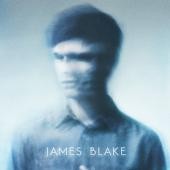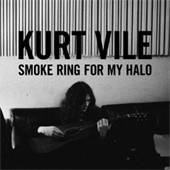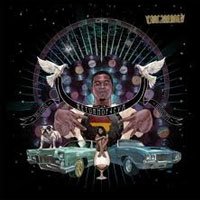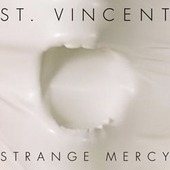
Features | Lists
By The Staff

20 :: A$AP Rocky
LIVELOVEA$AP
(Self-released)
In a year of Occupy movements, it’s funny how the breakout underground rapper of the year emerged in the most corporate way possible. A$AP Rocky is from Harlem but sounds like he’s a native of Houston; his strip-mining of the foreign city’s culture and swag has rewarded him with a gigantic pay-day from his share-holding overlords to the tune of $3,000,000. And through it all, Rocky has basked in the attention, opening “Keep It G” with an affirmation: “This is music for the villains.”
Surveying the competition, there aren’t many other acts one might deem more worthy of such grandiose sums, even in a particularly strong year for hip-hop. Few in this rising crop of rappers can boast the youth, potential, diction, flow, electricity, self-confidence, magnetism, and, er, “it” factor that Rocky flaunts and/or hordes by the baleful. It’s how he effortlessly flips heady Clams Casino beats into potential radio hits like “Demons”—a feat he pulls off wholly dependent on his charisma alone. If he had an oiled mustache, he’d be twirling it. It’s awesome.
Of course it’s not necessary to defend Rocky with claims of ineffable qualities; there are just as many tangible factors to the Glow’s earnest love for LIVELOVEA$AP. For one: his pitch-perfect collab with Schoolboy Q on the jam of the mixtape, the spastic sugar high “Brand New Guy.” Or: the mixtape’s stellar opening salvo, “Palace.” Or: “Out of this World” where Rocky offers the pitch-perfect “I’m fly like I never left / You’s a lie like ‘fly’ without the letter ‘F’ / If hip-hop is dead, fuck it, let it rest / Reincarnate it through me when she resurrect.”
In fact, those lines summarize what Rocky could mean to us in 2011: if hip-hop’s really in a holding pattern and most of our superstars are on the wrong side of 30, then a new generation of rappers has to step up to reinvigorate the genre, and Rocky could be their foremost face, gold grills and cold chills and all. Whether or not hip-hop actually needs reinvigorating is a whole ‘nother discussion; still, $3 million is a shitload of money. Goddamn, how real is that?
Brian Riewer

19 :: Gang Gang Dance
Eye Contact
(4AD)
I expect hardcore Gang Gang Dance fans will find this comparison infuriating on principle alone, but the sonic step forward Eye Contact represents over the band’s previous effort, the colossal and in many ways decade-defining Saint Dymphna (2008), is awfully similar to the one Drake took this year with Take Care, also his third release and another of my favorite records of the year: here we find Gang Gang Dance expanding their palette while staying true to their familiar aesthetic, crafting what is effectively a bigger, more professional-sounding production without sacrificing much of the homemade charm of their earlier material. Like Take Care, Eye Contact is mostly acclaimed but still feels divisive, a point of contention in certain critical circles—there are those who think it simply pales in comparison to its predecessor, or that it retreads too much ground. Others find it too sleek, a polished work that lacks the former record’s edge (even our own Mark Abraham, in a very positive review, acknowledges that in parts it suffers from “a lack of teeth”).
But I think Gang Gang Dance reached Eye Contact through a process of refinement, careful and considered, not only of their sound but of their approach to it. If Eye Contact doesn’t quite strike you as the game-changer Saint Dymphna so obviously was (even then), it’s because it just isn’t. Nor does it ever try to be; it’s not the radical stylistic and thematic evolution Saint Dymphna was over the promising but underwhelming God’s Money (2005) because they’ve already made that big change, and they’re not in need of another. They’re already playing the right game. But Eye Contact isn’t a simple reiteration of the Dymphna formula, either, because Gang Gang Dance aren’t content to sit entirely still. It’s just that the changes are subtler: they still drag any and all disparate sounds into their orbit, throwing everything from italo-disco to ’80s cheese to something vaguely Eastern-sounding into the mix, but I think they’ve gotten better at distilling something acutely their own out of it—the “Gang Gang Dance sound” has always been recognizable, but even as they continue to appropriate new sounds the result is sounding cleaner, simpler, more unified.
Nowhere is this more evident than on the record’s epic eleven-minute opener “Glass Jar,” across which Gang Gang race from one end of their stylistic range to the other. A comprehensive (but remarkably focused) summation of the band’s most salient features, “Glass Jar” is one of the straight-up best songs of the year, a patient slow-burn that erupts into an utterly infectious dance jam. Of course, Eye Contact can’t quite sustain this level of excellence throughout—if it could it would have landed about 17 spots higher up on this list—but Gang Gang Dance wisely deign to close out the record on a similar high, with titanic closer “Thru And Thru.” You leave feeling as thrilled as you were when the monster groove on “Glass Jar” kicked in, which is saying a lot. That’s a lesson they might as well have learned from Drizzy: impeccable sequencing goes a long way. But I’ll stop the comparison there.
Calum Marsh

18 :: James Blake
James Blake
(Atlas/Polydor)
The two best songs on James Blake are not Blake’s own, but the productions are unmistakably his. The first, “Limit to Your Love,” belongs to Feist, or at least used to until Blake rebuilt it as dubstep piano skulk; then there’s “The Wilhelm Scream,” a melody written decades ago by his father Blake reworks here for the 22nd century. And so goes most of Blake’s eponymous debut LP: it’s infectious, sure, but just as well a delicate studio tutorial in building functional intrigue from incompatible parts. How else to explain that the album is incredibly minimal, but hardly simple—and how to rationalize Blake’s patent adventurism with sonic dynamics but lack of personal dynamism? Perhaps his introverted eccentricities—manipulating vocals almost past recognition, using an unfocused art shot for his debut cover photo, playing coy with the press—were meant to maintain elusiveness, but he ended up crafting the year’s most immediately-identifiable aesthetic. Despite the glum nature of his best work, his success has been one big happy accident.
As a result, Blake was quickly ushered in as a critical golden boy, a posterchild for the year’s imaginative electronica—though not a scapegoat for its requisite dancefloor devolution. Fellow musicians took notice too; the same way Kanye West made Bon Iver a studio muse for Dark Fantasy, Drake famously kept a copy of James Blake on permanent display through his Take Care sessions—so not only did Blake release one of the best albums of 2011, he also inspired one of the biggest. In fact, almost every song with sparseness or subtle heartbreak from the past year was commended for sounding “like a James Blake production”; perhaps no other laptop musician has developed such a fascinating and definitive formula in so little time. Still, there are obvious influences throughout James Blake: the slow and syncopated funk of Stevie Wonder, albeit filtered through canyons of reverb; Radiohead’s palette of stray, percussive noises; even Joni Mitchell’s sense of writing lyrics that hint at confessional specificity but nevertheless remain universally relatable. But strung together, these elements mesh into an alien sound unique to Blake—one he was almost too shy to show the world, fearing he would shock listeners and disappoint as a vocalist. Given the amount of artists with modest skill who are fundamentally convinced otherwise, it was nice to celebrate Blake’s relative timidity and wish him well as he fumbles into full-blown confidence and contentment. Perhaps next year he’ll get into the habit of smiling in pictures.
For now, however, James Blake is a perfect document, if not an entirely seamless album. It captures the mystifying talent of a producer who could take apart a clock radio and reassemble it better, and the manifest creativity of a singer who feels his voice more a side instrument than star element. Thanks to Blake’s own prolificacy, we have several albums of material beyond this one full-length to explore; thanks to his instantaneous influence, we also have captivating permutations of his sound into other genres. And still, Blake maintains an intimation of tradition: one listen to his debut is irrefutable proof that hanging on in quiet desperation is indeed the English way.
Jonathan Wroble

17 :: Deerhoof
Deerhoof vs. Evil
(Polyvinyl)
Deerhoof move forward the way we used to climb my friend’s crawl space walls as kids: backs against one surface, feet against another, pushing hard against opposites until there’s nowhere to go but up. Deerhoof vs. Evil is not just Deerhoof’s poppiest album, but also their most abstract. Not just their most technically adroit, but also their roomiest and simplest. Not just medicated with ritalin, but also with mushrooms. But perhaps these arguments could be made for any of their albums, all of which sound the same, and none of which sound alike. In which case, Deerhoof vs. Evil is just another joyfully sweatstained lurch upwards for the band, not towards a finite endpoint, but to another position within a vast sphere of dizzying possibility.
The year’s end is a time for sweeping proclamations, so here’s mine: friends, Deerhoof is a special band. They are prolific, virtuosic, and joyful. They pit rock music’s most easily enjoyable components (a strummed acoustic guitar, badass drumming) against the multifaceted challenges of noise and chaos. They are not in pursuit of a great song, or even great songs. Like spiders spitting out threads, music is just what they do. They synthesize endlessly, finding ends and twist-tying them together, cramming disparate elements into their design, and ending up with an asymmetrical but beguiling web of sounds.
And so what, in practice, does Deerhoof vs. Evil sound like? Well, stylistic minutae aside, this is nothing so much a consistently great run of Deerhoof songs helped along by the cleanest production values they’ve yet allowed themselves. Though there are perhaps less finger-blistering, wrist-snapping, honest-to-god rock’n‘roll licks on DVS than on other favorites like Apple O’ (2003), there is a newly fastidious attention paid to texture here. Combine this with a lack of background fuzz, and it’s now fully audible when the pop of a drum skin brushes up against the crispy edge of slightly-fried guitar crunch. And the songs, idiosyncratic as always, all seem to have been carried to term rather than pushed out under-ripe. While the band’s palette is broad, these are artists who know themselves and each other well enough to handle an abundance of colors.
In a recent interview, regarding the album’s jokey title, Deerhoof drummer/singer/songwriter Greg Saunier said, “There’s something darkly humorous to me about the futility of being born with a drive to be a musician when people around me were starting non-profits or becoming politicians or doctors or teachers.” And while we can debate art’s importance in a world desperately in need of tangible solutions, we’ll all probably agree that Deerhoof is never going to save the world, nor is any band (sorry Bono). But at a time when gracing year-end lists is a primary goal for many bands, rather than an added perk, perhaps music itself could do with a little saving. And if there’s a band creative, driven, and just ass-kicking enough to defeat art-world evil, my money is on the atom-bomb power of Deerhoof.
Jessica Faulds

16 :: Kanye West & Jay-Z
Watch the Throne
(Roc-A-Fella/Def Jam)
On a purely surface level Watch the Throne is lightning in a bottle. A full-length record starring Yeezy and Hov actually came out and it is actually good? Let’s not take that fact for granted. Not only is it good, but it has the best overall collection of beats on a hip-hop record this year that’s not The Tape Hiss Hooligan and Kanye is in peak form while Jay sounds invigorated. There’s only a couple duds (“That’s My Bitch,” “Made in America”) and so many great moments besides: that galvanizing coda on “Niggas in Paris” where Kanye and Hov find themselves in their “zone”; everything that happens after the dazzling beat switch-up on “Who Gon Stop Me”; all of “New Day” with its Nina Simone cold chills, with its “sins of a father” rumination creeping towards hope and horns, with the way Yeezy leads Jay into invoking their verses with “me and the RZA connect / me and the RZA connect,” which is truly just the best. And that’s barely scratching the surface; the highlights come in droves and Ye and Jay are able to mic-toss a double-team of slaying shit because Watch the Throne largely foregoes Kanye’s tendency for calculated (if affecting) bombast and latter-day Jay’s tendency to treat a track list like a shrewd business move. Instead, Watch the Throne plays it fast and loose; “Otis” is one of the singles of the year and it’s just Kanye and Jay-Z having fun over “Try a Little Tenderness” on skip.
So, yeah, this record’s depth may not be entirely pre-meditated (a recurring Jon Brion-esque motif simultaneously comes off as a half-assed attempt at cohesion and yet a nice bit of added mystery). But on their thrones, looking in their mirrors, furtively sketching portraits of themselves in off-handed fashion, these two pop culture icons give a real glimpse of the other side of the looking glass wall that separates the kingdom from the figures of power. It may not be the most relatable rap out there but, boy, is it fascinating. In the rarefied air of their Tower of Babel, Ye and Hov—with all their money and influence—parse the metaphysical crisis that is deciding whether or not they are their own gods, their blessed status becoming an obstacle to faith in something above them. Opener “No Church in the Wild” describes them founding a religion on hedonism, sounding proud at the same time that Frank Ocean’s hook gives an ominous undertone, asking if anyone can make it out alive of the jungle created by this self-serving belief system. Then so much of the album describes in detail the duo’s success and just how hard they ball until “Welcome to the Jungle” finds Jay talking about how every day and night his belief in God gets strained more and more and he asks, twice, “where the fuck is the press,” rhyming that with “I’m so fucking depressed.” What does it profit a man to gain the world and lose his soul?
There really couldn’t be a more fitting conclusion to this theme than the one that Watch the Throne gives us with closer “Why I Love You.” A savior complex is something common to rappers on the status level of Ye and Hov (and Nas, big time) and so with that subject the rhyme reins are handed over to Hov so he can “digress on it,” mining a duality of monarch and martyr. The whole track is loaded with Christ rhetoric, from the final line to Jay’s brilliant brag “I’ll be fly when Easter’s over.” Besides sounding awesome, the hook sampled from Cassius’ “I Love You So” poses an incredibly provocative thought in this “savior” context: “Ooh, I love you so / But why I love you, I’ll never know.” Ye pulls his old chipmunk trick for the repeat of that but the effect isn’t superficial—honestly, it floors me. The hook ends up sounding like a call-and-response, like a leader making that statement about his followers and then the followers responding in like, both liturgy and doubt. The track eventually winds down into a striking chamber string interpretation of that sample’s melody, Jay asking what you do “when the love turns to hate?” An abrupt end and the realization that this is not a slight album, this is not minor Ye or Jay; Watch the Throne is an effective portrayal of how great it is to be on the Throne but with the understanding that the Throne comes at a cost not even the wealthiest men can afford.
Chet Betz

15 :: Kurt Vile
Smoke Ring for My Halo
(Matador)
Kurt Vile’s music sounds like it was made entirely from bed on Sunday mornings. No record this year other than Smoke Ring for My Halo reminds me so convincingly of the waking dreams one has when they’re sleeping off debauchery. In its languid tempos, compositional repetition, and exquisitely cavernous production, Vile seems to be tapping into something underneath memory. Words are just this close to making sense, all declarative sentences that utters this in-between feeling. “On Tour” features some of the most nightmarish imagery I’ve ever heard in a travelogue, but the music which accompanies is so modal, languid, and pretty—like something from Side B of Neil Young’s On the Beach—that one doesn’t know what to make of the song’s closing couplet: “I wanna beat on the drum so hard til it bleeds blood / I wanna rip out the heart til it don’t start again.” One can take issue with Vile’s diction sound unheard, but in the context of this song—as well as “Baby’s Arms,” “Society is My Friend,” “Runners Up,” and the title track, breathtaking melodies and productions all—it creates a startling third sensation that can only be described with ten or so hyphens. Vile is young and is concerned with his youth, and the rock ‘n’ roll tropes he either loves or feels like he’s supposed to love, but his ambivalence permeates every song. It’s a giant “on the other hand,” ten strands of thought only given coherence by the dreamlike haze of his songwriting. That it’s entirely beautiful is a big help.
Christopher Alexander

14 :: Big K.R.I.T.
Return of 4Eva
(Self-released)
So what’s with this “R 4” thing, anyway? Big K.R.I.T. evokes not the eternal return, but the return of the eternal: is he alluding to the recurrence, in his own music, of that same indefinable transcendent something, the participation in which raises all true art above its particular time and circumstances? The music suggests as much. This is an album that approaches weighty themes by way of personal, even intimate details; that examines, through the medium of one man’s beats, rhymes, and life, a litany of universal doubts and triumphs.
Take the beautiful “Dreamin’,” for example, where K.R.I.T.‘s confrontation with the naysayers who doubted his talent as an emcee doubles as a reflection on the struggle inherent in any attempt to establish one’s creative identity: “I told ‘em call me K.R.I.T. / They told me change my name / ‘Don’t be alarmed if you don’t make it / That’s just part of the game.’” But if the album is a meditation on the struggle that leads to success, it’s also a joyous declaration of victory: K.R.I.T. takes the doubters’ own words and makes of them music whose quality is absolutely indubitable.
Because this rap shit—to restate the unnamed haters’ message in “Dreamin’”—is for real. Every aspect of this album simply radiates authenticity. It isn’t just that K.R.I.T. constructs all his own beats and rhymes, making this his album and his alone; he also sidesteps the empty posturing of the Rick Rosses of the world with an honesty and humility rare in his genre: “I ain’t rap about dope nor did I sell it / I guess the story of a country boy just ain’t compelling.” The joke being that K.R.I.T. doesn’t need to exaggerate his own story precisely because he has the skill to make it compelling.
Brent Ables

13 :: Destroyer
Kaputt
(Merge)
I spent long stretches of 2007 driving through the slowly ambering landscape of central New York accompanied by Destroyer’s last good album, Rubies (2006), which inconspicuously drifted in and then out of my radar’s range in the year it was released,by some stroke of luck had ended up in my car’s CD rack one afternoon and never left. It makes sense that Rubies made a negligible initial impression on me. You see, I don’t have the time for Dan Bejar. Or I do, but there are mixtapes to be downloaded and deleted, videogames to be conquered, sporting events to observe, bars to be filled with hot air. On paper, I don’t have time for seven-minute meandering jams about incestuous griffons or whatever any given Destroyer song is about. But trapped in a car for eight hours every other weekend, either on my way to visit the girl with whom I was rapidly losing touch or returning home, I had time for such bullshit.
Bullshit is the word for what Dan Bejar does. His verses are frayed strings of sound that give the illusion of progression—like he’s building a narrative when, upon further inspection, each word he speaks is the beginning of a new story—which is the perfect soundtrack for traveling somewhere you know is going to be a waste of time. Fittingly, I carried Kaputt around in my headphones while running various errands: through the snow on a falafel run, to Target for a window fan, in crushing heat to the liquor store. I don’t know what Bejar is talking about, but I know how he talks—the peculiarities of his delivery; where the ba-da-da-das in each song fall—and have linked those sounds with a series of more or less insignificant memories. While listening to “Suicide Demo for Kara Walker,” I saw a woman, billowing with a sense of betrayal, shove her partner down the front steps of an apartment complex. I fearfully swore when I discovered a possum on the back steps of my third-floor walkup just as the saxophone kicked in on “Chinatown.” I stepped in dog shit during the title track’s second verse.
All of these occurrences are remarkable to me in some way, though not remarkable in any life-altering way. So is Kaputt. It’s a record about loneliness or traversing Europe with forty dollars in your pocket or something. I don’t know. Whatever it expresses is lost in the act of expression, to the point where the expression itself becomes the whole point. Bejar’s call to an “infinite sense of value,” to the “Mystic Prince of the Purlieu at Night,” only to remark that “I heard your record; it’s alright,” is arresting, then innocuous, like a beach’s white sand anthropomorphizing only to shrug and disintegrate back into a mound of sediment. With each wiggle of Dan Bejar’s whim, wonder is either snuffed out or reignited, the dust-obscured beams of a faulty lantern. And ultimately, we don’t see much: just half-shapes in gold-green light. Which is what Kaputt is, really: a collage of truncated stories, mired in digression and bad poetry, plastered against the most slinky, beguiling arrangements I’ve heard all year. It’s the perfect record for traveling somewhere…to the Walgreens to get cough drops for the girl you’re falling out of love with, perhaps. Toward nowhere at all under the slowly ambering sky.
Colin McGowan

12 :: St. Vincent
Strange Mercy
(4AD)
For years now Annie Clark has been wafting out albums that morph and change as suddenly as a scent on the wind. This year’s offering, Strange Mercy, is no different in that regard; it beckons as lithe and venomous as Clark’s previous invitations. We come because Strange Mercy is an oddly infectious album, but it wouldn’t be quite accurate to call it “catchy.” It is more complex than that. Strange Mercy is, by degrees, now lovely, now disturbing, now seductive, and now creepingly ominous in a way that sticks to your clothes. This artistic blueprint is familiar to St. Vincent fans, but this record reflects a change for Annie Clark’s moniker right down to the album’s cover. It’s almost more unsettling not to have Clark’s porcelain mug peering out at you, as it has from albums past. Instead we’ve got, like, a close up of a couch cushion. But if Clark’s presence is less apparent on the cover, it is certainly felt in every detail of the music itself.
Her whole career Clark has been dead set on discouraging listeners from “settling in” to her songs. Whatever else it has been, St. Vincent has never been casual music, background music. Clark doesn’t bother to wait for organic tempo shifts, instead lurching violently between textures, tones, and themes. Less successful St. Vincent efforts have been those that don’t quite strike the balance between the competing forces of Clark’s natural eclecticism, innovative song craft, straight out musical chops, and her calculated disjointedness. Yet even where previous work has felt uneven or dissonant, it’s always been exciting.
On Strange Mercy those forces elide seamlessly, creating a texture that seems at once welcoming and dangerous. As ever, Clark is not going to let us get too comfortable. Sure, she wants us to enjoy these songs, she wants to draw us in, but once we’re in we’d be well served to remember that she can also do some damage.
Eric Sams

11 :: Blackout Beach
Fuck Death
(Dead Oceans)
No longer the possessed medium spewing prophesy that we’ve come to know with Frog Eyes, on his third record as Blackout Beach Carey Mercer now seems mostly alone, singled out and vulnerable to things like wrath, judgment, and the crackdown of mortality. Fuck Death sees him stylistically and aesthetically turn a more enervate cheek as the atmosphere rises, builds, and turns against him like it’s been against him for eons. All that once spewed from his mouth is now everything that congeals in a dense stormfront: a god-shaped force oppressing and chasing him through landscapes of experimental synths and great vacancy, strewn with klaxon shrieks, squeals and ruptures of distortion from dying amps, onerous calls, and a primordial density that oozes from some mysterious atmosphere as it presses in.
Mercer sings in these strange new surroundings in strangely new whispers: in tightly vibrating urgency, deeply, as if from a dark hollow space left by the violent removal of a rib-bone. At times he blows with a minimal, tomb-like fust, and, at times, he ruptures into lush viscera without warning. He sings to us like we’re someone he’s hiding with. And during the few moments of brightness, which are mostly during duets with Megan Boddy in “Deserter’s Song” and “Torchlight Banned,” Mercer clings to her voice’s delicacy like a sheathe of photograph, like his voice stays so close to hers out of fear of what might happen if it stepped out of that thin shaft of light.
The fact that these things can be executed purely with sound and tension; the way you can feel a black weight pressing down upon you, abandoning or rubbing you into nothing with the pad of its thumb? Fuck Death is just another example of how Mercer relentlessy crashes through ideas of what music can be. What listening can be. It marks me as a listener; it unsettles deeply and gorgeously with an exciting strangeness that raises the hackles and prickles with pleasure. Mostly: these songs command listening in a visceral way no one but Mercer seems capable of.





